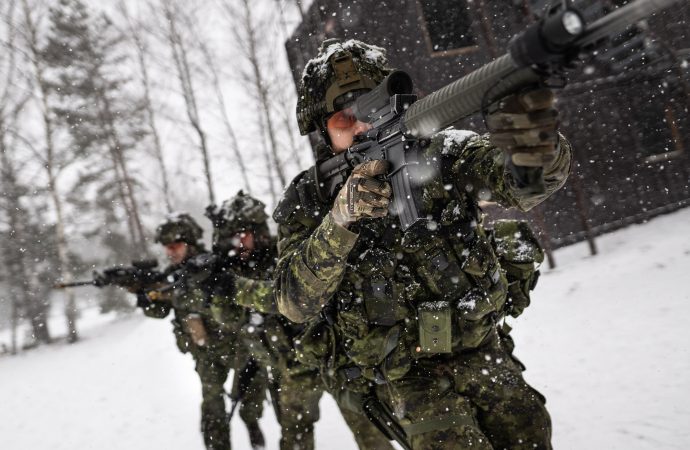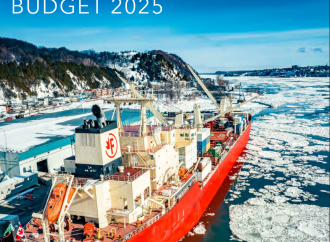With Donald Trump’s recent election victory in the United States, pressures on Canada to boost military spending to meet NATO’s 2% GDP target are bound to intensify. Trump has repeatedly criticized NATO members, including Canada, for not contributing “their fair share” to the alliance.
This push, however, lacks an evidence-based foundation and overlooks the full range of contributions a country like Canada can make to address an expanding array of international security threats.
The pressure is not new. First set at the 2014 NATO summit in response to Russia’s invasion of Crimea, the 2% target has become a defining measure of NATO members’ commitment to collective security. Yet, despite increased military spending, the very threat it was meant to counter reemerged when Russia invaded Ukraine in 2022.
Simply put, increasing defence expenditures—whether or not they meet the 2% benchmark—does not guarantee security and may even undermine it.
NATO is already exceptionally well armed, and its collective military spending far surpasses that of Russia. The flawed narrative that the alliance is somehow lagging militarily persists largely due to selective use of statistics and rhetoric that emphasize relative percentages over absolute spending levels, which can distort the true picture of the global military balance.
In 2022, NATO’s combined military expenditure exceeded $1 trillion, with Canada contributing $27.3 billion. Russia’s military spending was approximately $86.4 billion. By 2023, NATO’s total military spending rose to around $1.1 trillion, with Canada’s spending slightly increased to $28.1 billion. Russia’s spending remained relatively unchanged.
The 2% GDP target is an arbitrary figure, not derived from a comprehensive assessment of actual security needs or a strategic evaluation of threats. It represents a politically convenient round number chosen for its simplicity rather than its relevance. This one-size-fits-all approach fails to reflect the nuanced and diverse security challenges facing NATO, which require tailored responses rather than a blanket spending mandate.
Russia will predictably remain a key rationale for escalating defence expenditures within NATO. Before long, proponents of higher spending are likely to shift their primary focus to China.
🏅You are reading the blog post that won the CIPS Best Blog Award 2025🏅
In recognition of this award, and in accordance with the author’s wishes, CIPS is donating $300 to Project Ploughshares

The defence industry, which benefits significantly from policies advocating for higher military spending, plays a powerful role in shaping this narrative.
According to the Stockholm International Peace Research Institute (SIPRI), global military expenditures reached $2.11 trillion in 2021, surpassing the two-trillion-dollar mark for the first time. This trend continued in 2022 and 2023, with global military spending climbing to an unprecedented $2.44 trillion—a 6.8% increase from the previous year.
This focus on quantitative increases in military spending rather than qualitative improvements in collective security distorts national defence priorities and can result in wasteful expenditures on unnecessary or redundant military hardware. The powerful influence of this sector skews defence policies toward the interests of manufacturers rather than genuine security needs.
Canada’s defence policy should be rooted in evidence and strategic analysis, reflecting not just specific threats and opportunities, but the type of global security architecture Canada wishes to support. At a time when future threats will inevitably require more than military strength, it is crucial to recognize the broader security envelope that NATO must be prepared for.
Canada’s strategic contributions often lie in non-military domains crucial for overall security but are overlooked by a narrow focus on military spending. Diplomacy, development aid, multilateral cooperation, peacekeeping, and disaster response are all vital components of Canada’s contributions to global peace and security.
These efforts help prevent conflicts, mitigate crises, and build long-term stability, supporting NATO’s objectives in ways that are not reflected in simplistic percentage-based metrics. Canadian contributions to these areas play a crucial role in addressing the root causes of conflict and instability, and they are essential for achieving true collective security.
The 2% benchmark does not accurately measure commitment or effectiveness. True collective security is achieved through complementary capabilities, strategic cooperation, and flexible responses to emerging threats. Canada’s role in NATO should be recognized for its unique strengths and capabilities, which often lie in performing non-military functions that are crucial for collective security.
Although the reliance on guns and bullets to address the world’s security crises is seldom questioned in public debate, it is imperative to challenge this mindset. Security in the 21st century encompasses challenges and opportunities that extend far beyond traditional military threats.
Spending 2% of GDP on defence without a solid foundation is both inadequate and misguided—and Trump’s election victory does not alter the inherent flaws of this benchmark. With or without Trump, Canada has an opportunity, indeed a responsibility, to assert its leadership and champion a comprehensive, evidence-based approach to collective security.









